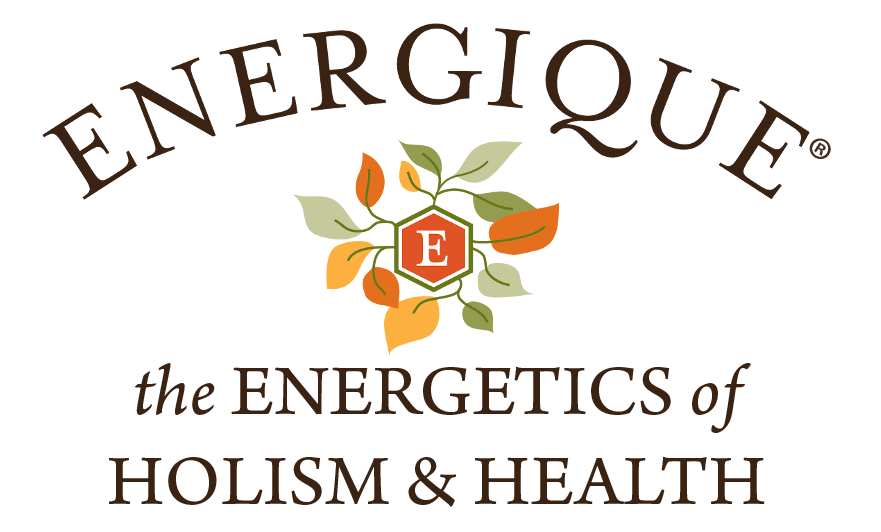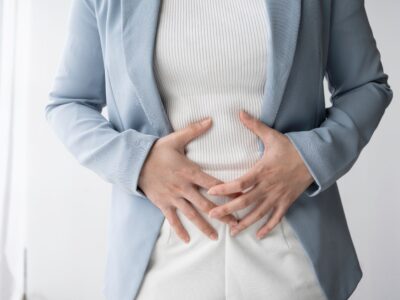Besides stress and poor diet, toxic exposures are probably the greatest contributor to modern disease. Among the many available detoxification therapies, homeopathic drainage remains popular as a way to gently stimulate the body’s own healing mechanisms and natural detoxification processes, especially because drainage remedies can be targeted to specific types of toxic exposure (like mold, heavy metals, or industrial chemicals) or to specific tissues and organ systems in need of cleansing. Though representing a departure from homeopathy’s classical roots, numerous therapeutic systems have been developed using the principle of “like cures like” to stimulate detoxification pathways with homeopathic doses of various toxins, generally combined with low-potency herbal remedies to support the different organs involved. Among the most well-known and elaborated systems of therapeutic drainage is homotoxicology, targeting detoxification at different phases based on the depth or severity of toxic exposure and how well the body is currently handling its own efforts to eliminate these toxins. Understanding homotoxicology’s six phases of toxemia allows for a more customized approach and provides a framework for applying homeopathic drainage to almost any condition.
The best way to conceptualize homotoxicology is adding depth to drainage, allowing for an even more targeted approach to drainage therapy. If the body can be visualized as a two-dimensional map, it makes sense that drainage therapy should be targeted towards the specific organs or tissues that seem most affected. Homotoxicology adds a third dimension, specifically addressing how deeply the toxins are entrenched and by what mechanisms they need to be eliminated, as these are the mechanisms that a well-selected drainage remedy aims to stimulate. The original theory developed by German homeopath Dr. Hans-Heinrich Reckeweg identified six phases of toxicosis, in other words six layers of depth which accumulated toxins may penetrate and from which they would need to be dislodged. For instance, mechanisms like salivation and perspiration may be enough to remove mercury from the bloodstream but may not be sufficient to eliminate it from the bones and nervous system. In homotoxicology, drainage remedies are chosen to support whole-body elimination at different levels of penetration, promoting the metabolic and eliminative processes necessary to address that layer and in this way, assist in moving even deeply held toxins out of the body.
In homotoxicology, the correct choice of drainage remedy depends on first determining at which level accumulated toxins are affecting the body, and consequently which phase of detoxification is being employed by the vital force. This can be ascertained by reading the body’s symptoms as a guide, and accounting for the fact that at the highest level of health, toxins tend to be eliminated through phase 1 processes. As health declines, whether due to stress, poor nutrition, lowered vitality, or simply an overloaded toxic burden, the healthy phase 1 mechanisms are overwhelmed, allowing toxins to penetrate deeper. As these stages progress, and toxins concentrated primarily in bodily fluids begin to penetrate the extracellular matrices and finally the actual cells, it requires a more radical response from the body to eliminate them, resulting in more severe symptoms and greater associated levels of dysfunction. The six phases can be further delineated by which level the toxins have reached: phases 1 and 2 address toxins at the humoral level where they can be easily eliminated by secretory processes, phases 3 and 4 at the matrix level where they begin to accumulate in bodily tissues, and phases 5 and 6 at the cellular level where their presence contributes to degeneration and severe dysfunction.

While conventional medicine regards disease symptoms as problems to be suppressed, in holistic medicine, symptoms are correctly interpreted as evidence that the body is trying to heal itself. Because each level of toxicity corresponds to a phase of detoxification, reading the body’s symptoms is key to identifying which level of toxicity needs to be addressed. In Phase 1, called the Excretion Phase, toxins have not penetrated the body deeply and can still be eliminated through normal methods of excretion. Symptoms during this phase represent the intensification of normal pathways like excessive sweating and urination, or a nagging cough and sinus congestion due to increased mucus production. Non-infectious diarrhea could be considered a phase 1 symptom, and in general most of what could be considered functional disturbances would fall into this category. Consider someone presenting with allergy symptoms that are not responding to normal treatments. In some cases, exposure to airborne toxins like glyphosate being sprayed on crops can cause the same symptoms as a pollen allergy, in which case homotoxicology would recommend a phase 1 detoxification remedy as opposed to allergy-focused immune support. Toxic exposures can often present like allergies, infections, and other common ailments, especially in the early stages, and should always be suspected when normal treatment approaches prove ineffectual.
Phase 2 in homotoxicology is known as the Inflammatory Phase and indicates the beginning of immune system involvement to cope with elimination channels being overwhelmed. If congestion, sneezing, and a runny nose are Phase 1 symptoms, rhinitis with worsening symptoms such as headache, brain fog, soreness, and difficulty breathing would indicate Phase 2. Inflammation is the most direct evidence of immune activity in the body, and in this Phase 2, the immune system gets involved to either clear toxins directly or clean up tissues damaged by toxic exposures. The key to identifying Phase 2 would be a history of repeated acute illnesses of an infectious or inflammatory nature. This could include bronchitis, ear infections, UTIs, sinus infections, or simply a tendency to get frequent colds. Although viral and bacterial infections are not normally thought of as connected to environmental toxins, the terrain theory of infectious disease suggests that it is the toxins in the body feeding these pathogens that allow infectious diseases to occur. Just like a house filling quickly with flies if no one takes out the trash, the accumulation of toxins in the body facilitates the overgrowth of decomposing organisms like bacteria and yeast. Even Louis Pasteur, credited as the father of modern germ theory and the notion of infectious disease, actually stated that “the microbe is nothing, the terrain is everything.” Whether or not an infection is present, frequent bouts of acute inflammation (but not chronic inflammation) would suggest that Phase 2 drainage is indicated.
What distinguishes acute from chronic inflammation is whether it is isolated or repeated, acute inflammation fully resolves. If Phase 2 symptoms predominate, it’s a good sign that the body is still eliminating toxins effectively. Homotoxicology’s Phase 3, known as the Deposition Phase, represents the first failure to eliminate toxins. However, it is still considered an effective response, in contrast to the final three stages which are compensatory and more likely to be associated with aggravations during detox therapy. In the Deposition Phase, toxins penetrate through the humoral level to the level of the extracellular matrix, and while they can no longer be eliminated effectively through ordinary mechanisms, they can still be confined in ways that limit their harm. During this phase, fewer reactive symptoms appear and there is a tendency for benign lesions and growths, such as cysts, which the body uses to wall-off offending substances it cannot eliminate. In the example of inhaled glyphosate, if inflammatory symptoms are insufficient to eliminate the toxin there may be polyp formation in effort to contain it. This is where conventional health authorities, who have deemed glyphosate safe and posing no risk to humans, would tend to scoff but there is indeed scientific evidence linking nasal polyps to environmental toxins. A study of California residents found a heightened risk of both nasal polyps and chronic rhinosinusitis, the primary risk factor for developing nasal polyps, in people living near sites of commercial pesticide application.1 When acute inflammatory reactions begin to subside and give way to polyps, cysts, warts, lipomas, or any number of benign tumors or pathological growths, it would be considered an indication for a Phase 3 approach to detoxification.
If toxins cannot be effectively quarantined by Phase 3 processes, associated inflammation becomes chronic and progresses to more serious dysfunction. This is the Impregnation Phase, and in homotoxicology most chronic inflammatory disorders are considered indications of the vital force stuck in Phase 4 detoxification pathways. Because they involve chronic inflammation, these pathways can become progressively destructive over time. Examples would include interstitial cystitis, chronic bronchitis, rheumatoid arthritis, and Hashimoto’s thyroiditis. In fact, chronic allergic disorders and autoimmune disease in general are believed to fit into this category. Say someone is chronically exposed to glyphosate, and the body’s capacity to eliminate or even contain it becomes overwhelmed. Glyphosate can cross the blood-brain barrier and in fact has been shown to weaken the blood-brain barrier over time, where its presence in the nervous system can cause direct dysfunction through mechanisms such as inhibiting glucose uptake into neurons and promoting neuronal inflammation. This is where a bridge is crossed from symptoms appearing as attempts to detoxify the substance to symptoms appearing as a result of organ dysfunction. Occupational exposure to glyphosate has been associated with memory loss and vision problems, and in-utero exposure has been linked to higher rates of autism2. A homotoxicological Phase 4 remedy would be called for in conditions such as these.
Phases 5 and 6 cross a boundary into what are considered the cellular phases, representing stages in which toxins have progressed from the connective tissues or extracellular matrix into the cells themselves. This can result in the complete loss of cellular function through either cell death in tissues that cannot regenerate (Phase 5) or DNA damage in normally dividing cells (Phase 6). Hence Phase 5 is termed the Degenerative Phase, and Phase 6 the Dedifferentiation Phase. In the glyphosate example, Phase 5 might involve the accelerated onset of dementia and Phase 6, being the phase associated with neoplasms, might result in brain cancer. Currently, there is limited evidence that glyphosate exposure can contribute to these diseases, though this may be because glyphosate exposure is still too recent a phenomenon to produce these slowly progressive conditions on a wide scale. Although glyphosate has been around since the 1960s, its use as a pesticide did not become widespread until the 1990s, when genetically modified crops with glyphosate resistance began to be patented. While glyphosate exposure causes degenerative changes similar to Alzheimer’s disease in rodent models, and while lawsuits have been filed claiming it to be responsible for brain cancer, a definitive link continues to be denied. More broadly, in terms of homotoxicology any disease associated with irreversible tissue damage or carcinoma would be associated with Phases 5 and 6 respectively.
Entire books can and indeed have been written on homotoxicology, but this brief overview of the six Phases provides a model that can be applied to numerous toxic exposures or toxemia in general. For more information on homotoxicology formulas available exclusively through Energique®, check out the Product Selection Quiz on our website. (You must be logged in to the site to access the quiz.)
- Yang H, Paul KC, Cockburn MG, et al. Residential Proximity to a Commercial Pesticide Application Site and Risk of Chronic Rhinosinusitis. JAMA Otolaryngol Head Neck Surg. 2023;149(9):773–780. doi:10.1001/jamaoto.2023.1499 ↩︎
- Costas-Ferreira C, Durán R, Faro LRF. Toxic Effects of Glyphosate on the Nervous System: A Systematic Review. Int J Mol Sci. 2022 Apr 21;23(9):4605. doi: 10.3390/ijms23094605. PMID: 35562999; PMCID: PMC9101768. ↩︎


 The Importance of Electrolytes for Healthy Mood
The Importance of Electrolytes for Healthy Mood